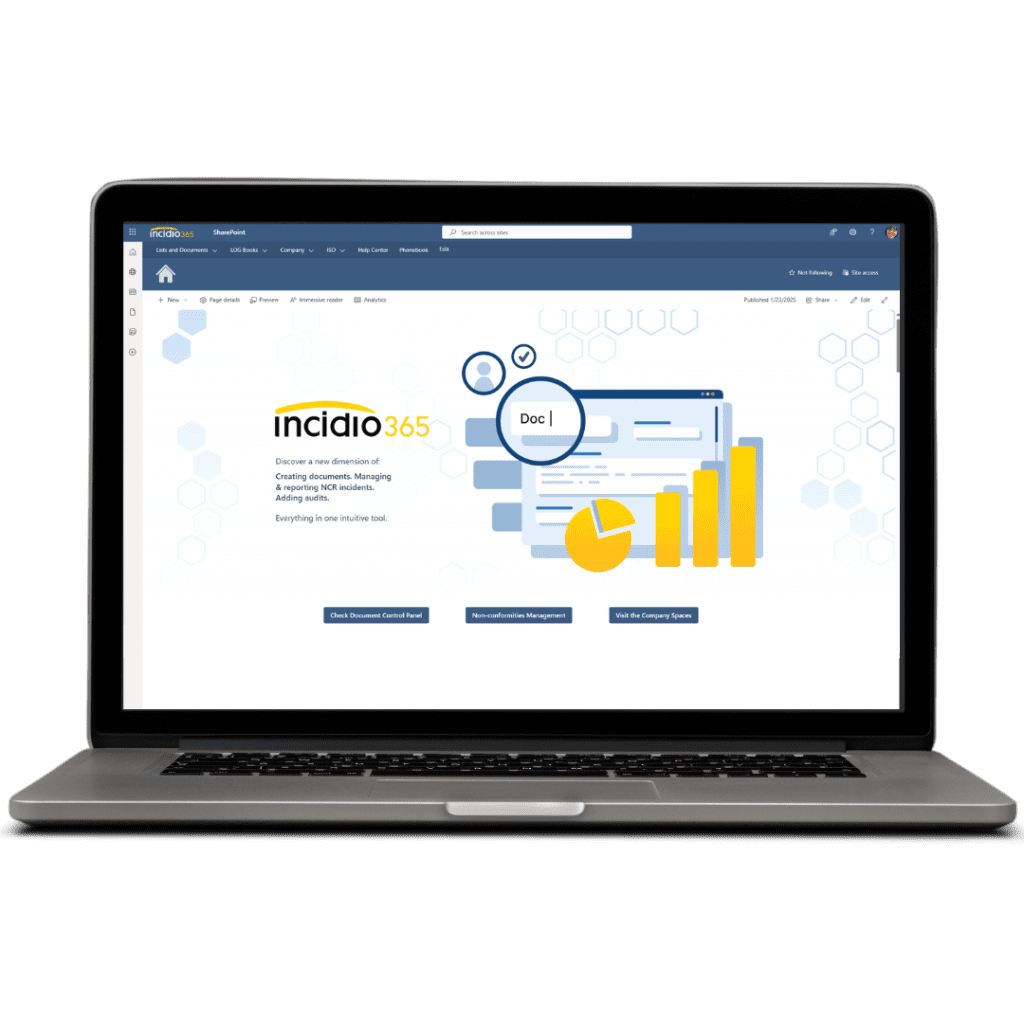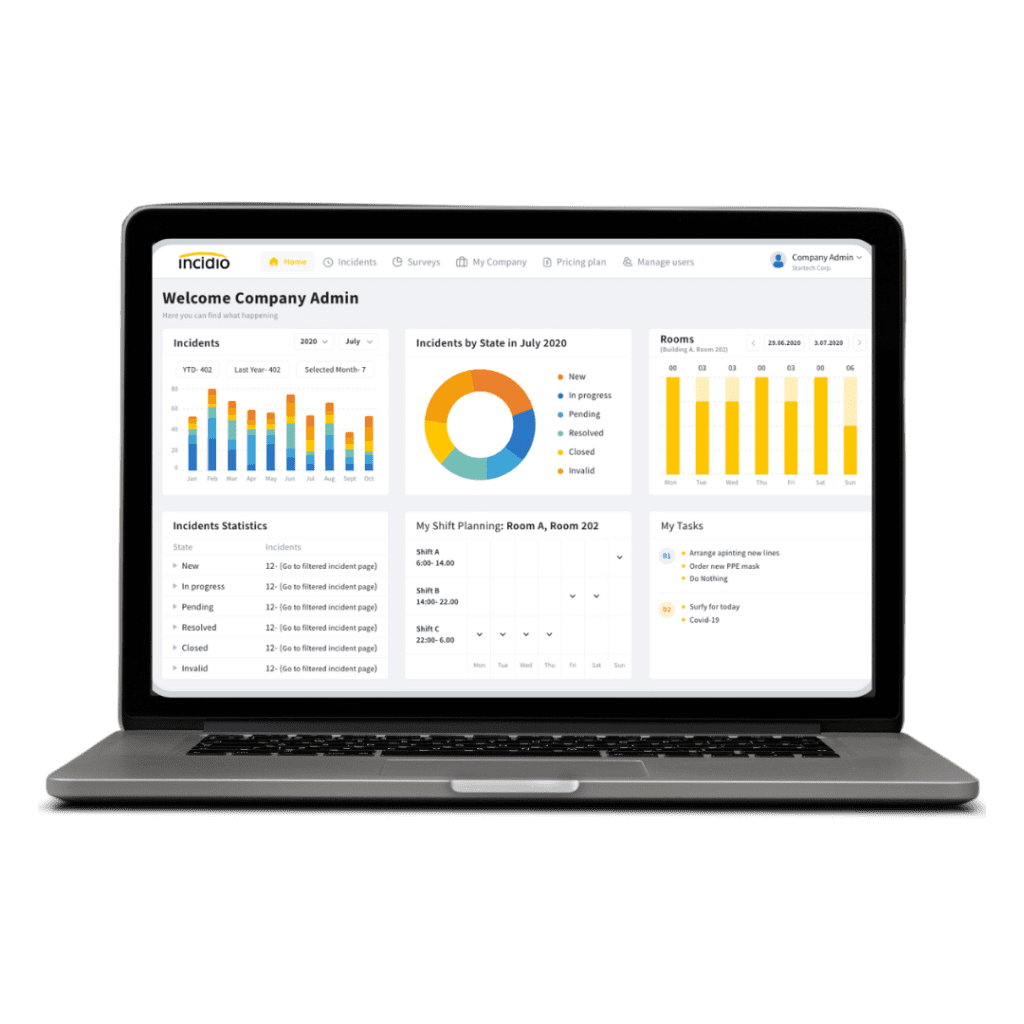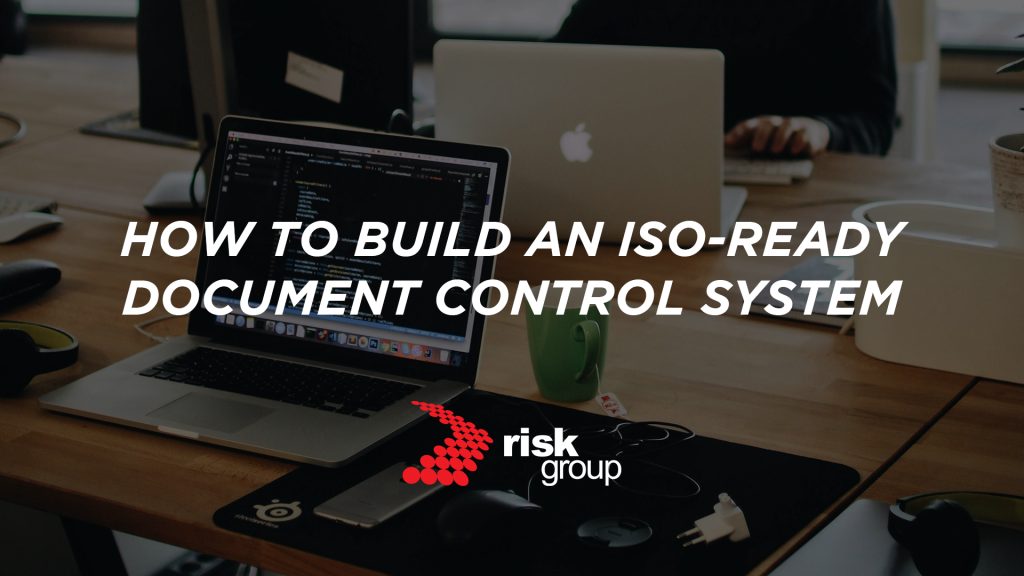Table of Contents
ISO’s clause on documented information is one of the most discussed and misunderstood areas of ongoing conformance management.
Whenever an ISO Management System Standard undergoes an update or revision, we’re asked: “Do we need to rewrite all our SOPs?” or “Will auditors reject our existing documentation?”
What do ISO revisions mean for my documentation?
Here’s the good news…
Revisions, new releases and updates of ISO Management System Standards don’t mean that you need to start working with your documents from scratch all over again.
Instead, it’s an opportunity that calls on you to review and update existing documented information and controls, to retain relevance, accuracy, and usability. It’s a chance to ensure that your management system and associated documentation are fully audit-ready.
With several major ISO Standard updates on the horizon—such as the ISO 9001:2026 standard—now is the perfect time to strengthen your control and system for documented information.
Download our free guide: “How to Build an ISO-Ready Document Control System” for details about building & automating an ISO-ready document control process.
ISO Standard revisions: What does it mean for your documentation?
Every ISO management system standard goes through a scheduled systematic review (usually every 5–7 years). There is generally a Technical Committee associated with the various fields of standards, who deciphers the need for a revision, update or change.
When an ISO Standard is revised and published, organisations and auditors have a three-year transition window to align their systems, knowledge and registration with the latest requirements.
The ISO Management System Standard revision and transition principles apply consistently across the major standards.
Although some finalisation is still required before the various upcoming International Standards are released, historical transitions indicate what to expect.
Insight: Review and update of your existing documented information should typically aim for refinement, not reinvention.
Conducting a document review now (against the current version of a standard) sets you up for a speedy update and further refinement once a transition window kicks in.
Some of the upcoming Management System updates include:
- ISO 9001 (Quality Management) – Next revision expected in 2026.
- ISO 14001 (Environmental Management) – Aligned to Annex SL in 2015.
- ISO/IEC 27001 (Information Security) – Revised in 2022 to address new digital threats.
- ISO 45001 (Occupational Health & Safety) – Introduced in 2018, harmonised with Annex SL.
- ISO 19011 (Auditing Guidelines) – Updated in 2018 with specific direction on reviewing documented information.
Documented information across multiple ISO Standards
The Annex SL structure found in ISO Management System standards ensures that managing documented information is directly compatible and streamlined across standards such as ISO 9001, ISO 14001, ISO 27001, ISO 45001, and others.
This harmonisation reduces redundancy and facilitates cross-standard integration. Instead of maintaining several documents, you have a single controlled version mapped to various ISO standards you may work with.
Download our free guide: “How to Build an ISO-Ready Document Control System” for details about building & automating an ISO-ready document control process.
Understanding ISO Clause 7.5 documented information
What is documented information?
Documented information refers to all records and documents that demonstrate how an organisation’s management system operates and complies with international standards.
This includes everything required by the standard itself, as well as any additional documentation the organisation decides is necessary to ensure effective processes and outcomes.
The scope and complexity of documented information can vary, depending on organisational size, activity type, and employee competence.
What does the documented information clause require?
At its core, Clause 7.5 on Documented Information aims to assist your business in managing documented information in a way that preserves its integrity, availability, and usability.
Clause 7.5 Documented Information requires organisations to:
- Define how documents are created, reviewed, approved, and updated.
- Ensure documents are clearly identifiable, easy to find, complete, traceable, and accessible when needed.
- Manage both internal and external documents to keep them legible, secure, and properly distributed.
- Give users appropriate access—enough to do their work, but not more.
- Protect sensitive data from unauthorised changes or leaks.
- Make sure staff can identify the current approved version at all times.
- Retain outdated versions when necessary, labelling them as obsolete.
Why do auditors review documented information?
Auditors review documented information to verify that the management system is functioning as intended.
By examining records and documents, auditors can confirm whether the organisation is meeting requirements, following its own procedures, and maintaining adequate control over its processes.
This helps assure customers, stakeholders, and regulators that the system is robust and reliable.
What do auditors review when assessing documented information?
The following scenarios provide insight into what an auditor may request and how these requests can demonstrate that the organisation’s documentation controls conform with ISO management system standards requirements.
1. Document Approval and Version Control
Scenario: The auditor requests to see the approval history of the Quality Manual.
Outcome: The organisation provides an electronic document, showing the manual’s title, current version, the date it was last updated, the approving manager’s digital signature, and a change log. This demonstrates control over document revision and confirms approvals are being tracked.
2. Control of External Documents
Scenario: During the review, the auditor asks how the organisation manages documents issued by suppliers (e.g., safety data sheets).
Outcome: The compliance officer produces a folder from the shared drive labelled ‘Supplier Documents’ with subfolders for each supplier, each labelled with access privileges and review dates. A sample SDS shows a stamp with a review date and the initials of the reviewer, demonstrating control and confirmation of use.
3. Document Retention and Disposition
Scenario: The auditor queries the length of record retention for obsolete procedures.
Outcome: The records manager pulls up the retention schedule, showing that outdated SOPs are archived for three years and then disposed of per a documented policy. A recent deletion log provides evidence of correct and timely disposition.
4. Ensuring Legibility and Preservation
Scenario: The auditor asks if old production records remain readable.
Outcome: Operations retrieve a scanned batch record from three years ago, displaying it on-screen for the auditor. The file is clear, correctly indexed, and readable, showing effective preservation of documentation.
5. Access and Distribution
Scenario: The auditor wants to confirm only authorised users can edit policy documents.
Outcome: The IT manager demonstrates access settings on the document server, showing that most users have view-only access while only quality managers have editing rights. An access log further records who last accessed or updated the document.
Download our free guide: “How to Build an ISO-Ready Document Control System” for details about building & automating an ISO-ready document control process.
Common misconceptions when ISO Standards are revised
When a new version of an ISO standard is released, panic can set in. Teams start worrying about whether they need to rip up existing documents, create brand-new templates, or scramble overnight to comply.
The truth is, most of these fears come from common misconceptions. Let’s clear a few of them up.
Misconception: “We must redo every SOP.”
Reality: Only processes impacted by the new requirements need changes. If your procedures are still relevant and effective, they remain valid. The focus should be on aligning where gaps exist, not rewriting everything for the sake of it.
Misconception: “Auditors reject old documents outright.”
Reality: Only processes impacted by the new requirements need changes. If your procedures are still relevant and effective, they remain valid. The focus should be on aligning where gaps exist, not rewriting everything for the sake of it.
Misconception: “Auditors reject old documents outright.”
Reality: Auditors don’t expect you to erase history. They want evidence that the right version of a document was used at the right time. Maintaining historical versions is not only acceptable but often necessary for traceability.
Misconception: “Each revision means new templates.”
Reality: ISO standards don’t dictate formats. If your existing templates are user-friendly, controlled, and consistently applied, there’s no reason to reinvent them. Templates should serve your team, not the other way around.
Misconception: “Transition must be done overnight.”
Reality: ISO revisions come with a transition period which is normally three years, so organisations have time to plan, train, and adapt. Rushing through just to tick a box can create more problems than it solves.
How to structure your document control system for revisions
A structured approach minimises disruption, avoids rushed updates, and ensures everyone stays aligned.
1. Build review cycles
Don’t wait for an external audit or worse, a nonconformance to discover outdated documents. Establish planned review cycles for critical SOPs, policies, and manuals.
- For high-risk or high-use documents, look at annual or semi-annual reviews.
- For others, tie reviews to your management review or internal audit cycle.
This creates a proactive cycle where changes are anticipated, not reactive.
2. Tag and map documents to clauses
Every document should have a clear purpose and link back to the standard(s) it supports.
By mapping procedures and policies to relevant ISO clauses (ISO 9001 for quality, ISO 14001 for environment, ISO 27001 for information security, etc.), you create efficiencies in integrated management systems.
This not only helps during audits but also prevents duplication of effort when one document addresses multiple requirements.
3. Assign change owners
Each document should have a designated owner who oversees updates, ensures approvals are obtained, and communicates changes to relevant teams.
This prevents the problems where no one knows who is responsible for maintaining accuracy. Clear ownership builds accountability and speeds up revision cycles.
4. Maintain audit-ready status
An auditor should be able to pick any document and trace its lifecycle, who created it, who approved it, when it was revised, and why.
- Keep version logs, approval records, and change histories organised and accessible.
A strong control system is one where audit trails are visible within minutes, not hidden in inboxes or file cabinets.
5. Use technology to automate
As organisations scale, manual systems sometimes can’t keep up with the complexity of multi-standard compliance.
Automation software such as INCIDIO simplify document control by managing workflows, tracking changes, issuing reminders for reviews, and providing centralised access.
This reduces the risk of human error, ensures consistency, and accelerates transitions when standards evolve.
Download our free guide: “How to Build an ISO-Ready Document Control System” for details about building & automating an ISO-ready document control process.
How document Automation adds value
Although revised ISO standards don’t require brand-new documents, they do require controlled updates. That’s where automation earns its keep!
Bring your ISO Management System to life!
The INCIDIO software suite is a purpose-built GRC platform, designed to simplify ISO management systems.
It automates a multitude of items, from risk management and document control to incident reporting and analytics.
It directly supports the requirements of Clause 7.5 and beyond.
Outcomes you can count on
Faster, safer updates during revisions—no scramble, no guesswork.
Audit-ready in minutes with live logs, approvals and status.
Less admin, more improvement—teams spend time fixing gaps, not chasing signatures.
Mapped to ISO Clause 7.5 (what auditors expect)
7.5.2 Create & Update: Guided workflows for drafting, review, approval and controlled release; automatic versioning with who/what/when.
7.5.3 Control: Role-based access, distribution to the right users, visible status (current/obsolete), and retention rules with audit logs.
External documents: Controlled registers for customer specs, legal requirements, SDS, standards—tracked, reviewed and referenced.
Traceability & evidence: Immutable audit trails, change history, and ready-to-export reports.
Cross-standard alignment: Clause/tag mapping (e.g., 9001, 14001, 27001, 45001) to avoid duplication in integrated systems.
Download our free guide: “How to Build an ISO-Ready Document Control System” for details about building & automating an ISO-ready document control process.
Choose the deployment that fits your environment
INCIDIO365 (for Microsoft 365 / SharePoint users)

Native SharePoint integration; works with Teams, Outlook and OneDrive.
Uses your existing identity and permissions for seamless access control.
Familiar UI for fast adoption across sites and departments.
Explore the INCIDIO365 add-on, built to seamlessly integrate with your Microsoft SharePoint environment. Perfect for organisations wanting to keep streamline their ISO Management System within existing Microsoft infrastructure.
INCIDIOcom (cloud-native, platform-agnostic)

Standalone SaaS for multi-site, multi-standard document control.
Scales quickly without relying on your Microsoft stack.
Ideal when you need a single source of truth across varied operations.
INCIDIOcom software solution helps organisations manage ISO Management System requirements more effectively. This is ideal for businesses not currently using Microsoft SharePoint.
Join a software-automation demo session
If you’ve been considering how to digitise and streamline your management system, these upcoming live demo sessions are the perfect opportunity to see INCIDIO in action.
Why join a Demo Session?
- Live walkthrough of key features
- Opportunity to ask questions directly to our product experts
- Practical tips on digitising your ISO system without unnecessary complexity
Seats are usually limited, so be sure to secure your spot early and take the first step towards a smarter, more resilient management system.
Your next steps with Documented Information
Think refinement, not reinvention
ISO Management System Standard revisions are designed for measured transition, not wholesale rewrites.
Your job is to keep documented information current, controlled and usable—and to show the evidence. With review cycles in place, clear ownership, clause mapping and the right tooling, you’ll move through ISO standard updates with confidence.
Run a quick gap analysis against Clause 7.5 (creation/update, control, external docs, retention).
Prioritise high-risk documents for early review; tag owners and due dates.
Adopt automation where it matters most (approvals, version control, distribution, audit logs).
Prove control—ensure you can surface the current version, history, and access rights in minutes.
Work with Risk Group
If your team needs tailored support, book a consultation with our experts for practical advice on strengthening your system. Contact the Risk Group team today at +27 (0) 31 569 5900 or +44 (0) 203 728 6179 or send an email to enquiries@riskgroup.ltd.




